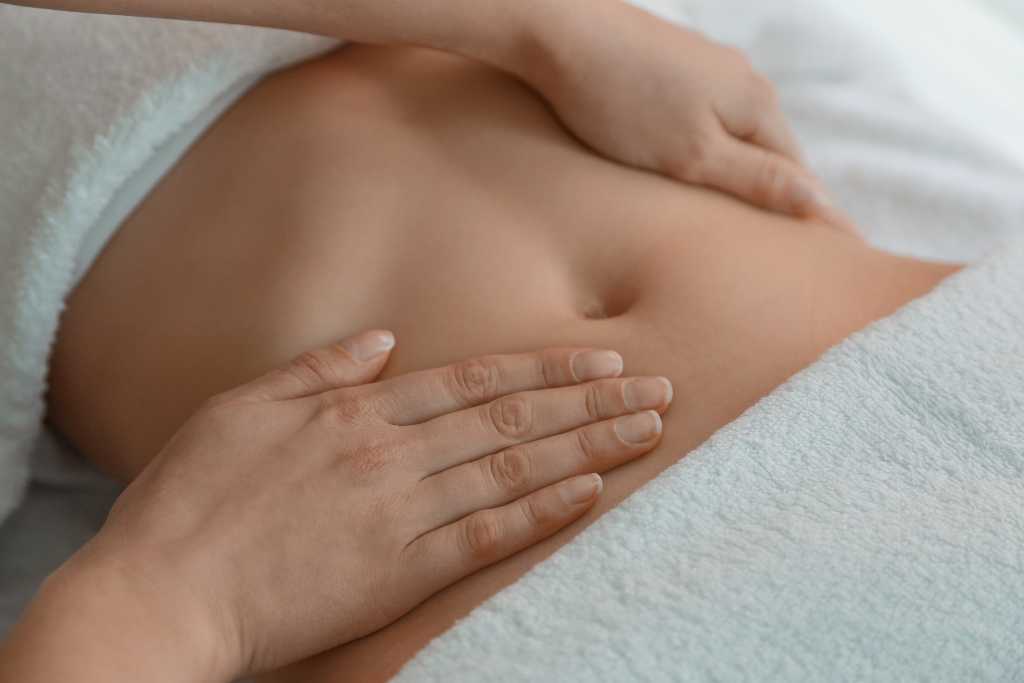Lymphatic drainage massage is one of those treatments that’s gaining popularity fast and for good reason. This different type of gentle massage comes with many additional health benefits other than just relaxation.
Whether you’re hoping to reduce swelling, improve detoxification, or boost your immune system, this massage can do it all.
In this guide, we are going to explain the benefits of lymphatic drainage massage, how it works, and why it may be the best option for you.
What is Lymphatic Drainage Massage?
Lymphatic Drainage Massage aids the movement of lymph fluid throughout the body, using a super gentle touch. The lymphatic system is in charge of eliminating toxins, thus playing a significant role in managing the immune system.
But because it lacks a pump in the heart like circulatory system does, little gentle massage will assist in keeping it flowing.
How Lymphatic Drainage Massage Works
The therapist uses gentle light strokes and soft pressure throughout the massage to encourage lymph movement. This makes the removal of excess fluid easier, reduces swelling, and circulates blood flow.
The relaxing sensation is pleasant, but it is much more beneficial. The goal is to facilitate the body achieve maximum efficiency.
How Lymphatic Drainage Massage Benefits Your Health
So, why should you try lymphatic drainage massage? There are quite a few benefits, and we’re going to dive into the most common ones below.
Boosts Immune Function
Your lymphatic system is essential for fighting off infections it’s the body’s trash removal system. It helps to get rid of toxins, viruses, and bacteria, while transporting white blood cells that defend the body from infections.
With the help of lymphatic drainage massage, the lymph can be made to flow more openly which can enhance immune system functionality and thus promote better overall health.

Reduces Swelling and Inflammation
Is there swelling or fluid retention? A lymphatic drainage massage may be just what you need.
This massage helps move excess fluid out of your tissues and back into the bloodstream, where it can be processed and removed.
It’s especially helpful if you’ve had surgery, a long flight, or suffer from chronic swelling conditions like lymphedema.
How it helps with swelling:
- Post-surgery: Helps reduce post-surgery swelling and speeds up recovery.
- Chronic conditions: Managing swelling effectively for patients with rheumatoid arthritis.
- Pregnancy: Many expectant moms use it to reduce the swelling that comes with pregnancy.
Promotes Detoxification
Your body is constantly exposed to toxins, and the lymphatic system helps filter and flush them out.
The process of removing toxins from the body is referred to as the detox process. Lymphatic drainage massage works to enhance this process by encouraging the flow of lymph. This can be beneficial in eliminating waste, reducing swelling, and possibly even improving skin health.
Here’s how it helps detox:
- Removal of toxins: Washing away wastes keeps your body healthy and in good condition.
- Boosts nutrient absorption: Better nutrient delivery to your tissues and cells.
- Reduces bloating: Helps move excess fluids out, reducing bloating and puffiness.
Improves Circulation
Lymphatic drainage is concerned primarily with lymph flow, yet it aids in blood circulation as well. Improving lymphatic circulation also improves blood circulation, bringing more oxygen and nutrients to your tissues.
This makes it a great massage for boosting energy, promoting quicker muscle recovery, and supporting overall circulation.
Why it improves circulation:
- Speeds up muscle recovery: Assists athletes in recovering from strenuous exercises faster.
- Reduces fatigue: Increased blood flow means more energy for your body to use.
- Supports heart health: Helps improve blood flow for reduced chances of heart problems.
How Often Should You Get Lymphatic Drainage Massage?
How often to get a lymphatic massage ultimately depends on individual goals and objectives. As an example, for general wellness, once a month is usually enough but in the case of combating swelling, recovering from surgery, or other health issues, more frequent treatment may be necessary.
Frequency tips:
- Just starting out: If you’re new to lymphatic drainage, try to have one to two sessions weekly.
- For detox or swelling: A weekly session for 4-6 weeks can help jump-start your body’s healing process.
- Post-surgery: Many people do two to three sessions a week for the first month after surgery.
Who Can Benefit from Lymphatic Drainage Massage?
Lymphatic drainage massage works effectively for more than just those with medical conditions; in fact, nearly everyone can benefit from it. However, some people appreciate the experience more than others.
People with Lymphatic or Immune Disorders
Lymphatic drainage massage is particularly useful for people suffering from lymphedema or fibromyalgia as it enhances fluid circulation, minimizes edema, and optimizes immune response.
Post-Surgery Recovery
Retaining fluid and swelling after surgery are very common. Lymphatic drainage massage can improve circulation and assist in removing excess fluids, helping with fluid retention and swelling.
Athletes and Fitness Buffs
For fitness enthusiasts and athletes, swollen muscles and inflammation caused by an intense workout can be expected. Lymphatic drainage massage can speed recovery time, relieve muscle stiffness, and reduce lactic acid buildup.
Stress Relief Seekers
Lymphatic drainage massage can also be great for people who just need to chill out. The gentle strokes and soothing rhythm help relax the nervous system, reduce stress, and improve sleep quality.
What to Expect During a Lymphatic Drainage Massage Session
A typical lymphatic drainage session lasts between 45 minutes to an hour. During the session, the therapist will use light, gentle strokes to target key lymph nodes and stimulate fluid movement. You may even fall asleep—it’s that relaxing!
Post-massage tips:
- Drink water: Hydration is key to flushing out toxins.
- Rest: Give your body time to process the lymphatic flow.
- Take it easy: Don’t schedule intense workouts right after let your body recover.
Common Myths About Lymphatic Drainage Massage
There are a few myths surrounding lymphatic drainage massage that might make people hesitant to try it.
It’s Only for Detox
While detoxification is a big benefit, lymphatic drainage also helps with circulation, immune function, and reducing swelling—so it’s more than just a detox tool.
It’s Painful
Some people think lymphatic drainage is uncomfortable because of its light pressure. In reality, it’s a very gentle, soothing massage technique with little to no discomfort.
It’s Just a Luxury
While lymphatic drainage can be a treat, it’s not just a luxury. It’s a health-boosting massage that can help improve circulation, detoxify your body, and keep you feeling your best.
Lymphatic Drainage Massage vs. Other Types of Massage
How does lymphatic drainage stack up against other types of massage?
Lymphatic Drainage vs. Swedish Massage
- Swedish Massage: Treat yourself to relaxation with this type of massage as it enhances flexibility, lowers muscle tension with long strokes.
- Lymphatic Drainage Massage: Apply less-force to stimulate movements of lymphatic fluids and outwards to release blockage.
Lymphatic Drainage vs. Deep Tissue Massage
- Deep Tissue Massage: Aims at deep body muscles where tension poses a problem.
- Lymphatic Drainage Massage: Concentrate on fluid movement and circulatory improvement rather than deep muscle attempts.
How to Find a Qualified Lymphatic Drainage Massage Therapist
Make sure to check their certification and experience when searching for a lymphatic drainage massage therapist as these details matter. A trained professional will know the right techniques and amounts of pressure to apply for the best results.
Here’s how to find the right one:
- Make sure that they have a certification in lymphatic drainage.
- Search for a specialist relevant to the problem you are experiencing.
- Ask other people for recommendations.
- Choose someone that you are okay working with.
- Make sure the place looks clean and professional.
You will get the best results from your massage when you select the most appropriate therapist.
Conclusion: Is Lymphatic Drainage Massage Right for You?
Whether you require support for your immune system, pain alleviation, or even wanting to unwind, lymphatic drainage massage might be just the right solution. Everything is taken care of courtesy of this gentle technique, including detoxification, tilt medicine, as well as circulation, and recovery.
Lymphatic drainage is right for you if you’re dealing with chronic swelling, are post-operative, or simply looking for some wellness. You don’t have to worry; it’s safe, comforting, and helps improve your health.
Excited to try it out? Find a certified lymphatic massage therapist in Rockville today and discover how lymphatic drainage massage can work wonders for you.

